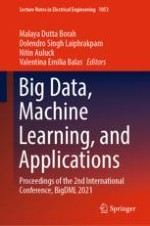2024 | Buch
Big Data, Machine Learning, and Applications
Proceedings of the 2nd International Conference, BigDML 2021
herausgegeben von: Malaya Dutta Borah, Dolendro Singh Laiphrakpam, Nitin Auluck, Valentina Emilia Balas
Verlag: Springer Nature Singapore
Buchreihe : Lecture Notes in Electrical Engineering
